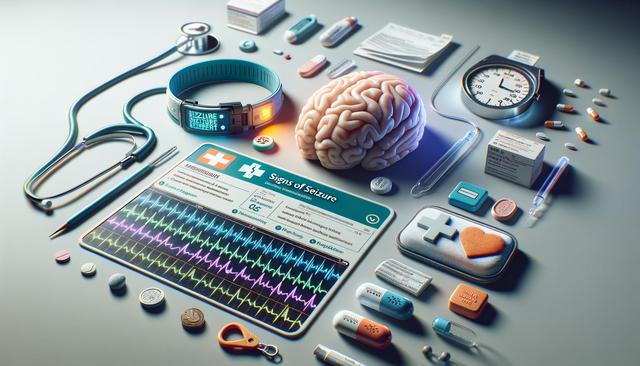What Is a Seizure?
A seizure is a sudden, uncontrolled electrical disturbance in the brain. It can cause changes in behavior, movements, feelings, and levels of consciousness. Seizures can be a one-time occurrence due to a specific trigger, such as high fever or low blood sugar, or they can be a sign of an ongoing medical condition like epilepsy. Understanding what a seizure is helps in identifying early symptoms and seeking timely medical help.
Seizures are broadly classified into two categories: focal (or partial) seizures and generalized seizures. Focal seizures affect one part of the brain and may cause unusual sensations or movements in one part of the body. Generalized seizures impact both sides of the brain and often lead to loss of consciousness and convulsions. Recognizing the type of seizure can assist in determining the appropriate treatment and management approach.
Seizures can happen at any age and may be triggered by various factors such as genetic conditions, head trauma, infections, stroke, or developmental disorders. In some cases, the cause remains unknown. Regardless of the type or cause, identifying the warning signs early can make a significant difference in how a seizure is managed.
Common Physical Signs of a Seizure
The physical signs of a seizure can vary widely depending on the type and severity. Some people may experience subtle symptoms, while others may show more dramatic signs. Common physical indicators include:
- Sudden jerking movements of the arms and legs
- Stiffening of the body
- Loss of muscle control leading to falls
- Rhythmic twitching or convulsions
- Temporary breathing issues or bluish skin tone
These signs may last from a few seconds to several minutes and are often followed by a period of confusion or fatigue. It is important to note that not all seizures cause convulsions. Some may simply involve a blank stare or brief loss of awareness, especially in children.
In addition to the visible symptoms, individuals may also experience internal sensations such as tingling, dizziness, or a strange taste or smell. Recognizing these signs early, especially in those with a history of seizures, can help prevent injury and allow for quicker medical intervention.
Behavioral and Emotional Indicators
Not all signs of a seizure are physical. Behavioral and emotional changes can also signal the onset of a seizure. These may include:
- Sudden confusion or inability to respond
- Repeating the same word or movement
- Unusual or inappropriate emotional reactions, such as laughing or crying without cause
- Fear, anxiety, or déjà vu without a clear trigger
These symptoms may occur alone or alongside physical signs. They often precede the more noticeable aspects of a seizure and are important early indicators. In focal seizures, these emotional and behavioral changes can be especially pronounced.
Family members, teachers, and caregivers should be aware of these subtle signs, particularly in children and older adults. Early recognition helps in documenting the event accurately and informing healthcare providers for a more precise diagnosis and treatment plan.
Post-Seizure Symptoms
After a seizure, the body and brain need time to recover. This period is known as the postictal state and can vary in length and intensity. Common post-seizure symptoms include:
- Fatigue and drowsiness
- Headache or muscle soreness
- Confusion or disorientation
- Memory loss regarding the event
- Emotional changes such as irritability or sadness
During this time, individuals may need rest and should not be left alone until they are fully aware and alert. In some cases, the postictal state can last several hours or even days. Understanding what to expect after a seizure is crucial for providing appropriate care and support.
This phase is also a good opportunity to document what happened during the seizure, including the duration, specific behaviors or movements, and any potential triggers. This information will be helpful for healthcare providers in adjusting treatment or recommending further testing.
When to Seek Medical Help
While some seizures are isolated events, others may be a sign of a more serious neurological condition. It is important to know when to seek immediate medical attention. Situations that require urgent care include:
- The seizure lasts longer than five minutes
- The person has difficulty breathing or regaining consciousness
- Multiple seizures occur without full recovery between them
- The seizure occurs in someone with no prior history
- Injury occurs during the seizure
Even if the seizure appears mild, it is always a good idea to consult a healthcare provider to determine the cause and discuss potential treatments. Follow-up care may include neurological exams, imaging tests, and possibly medication to control future seizures.
Early diagnosis and proper management are key to reducing the risk of future episodes and improving quality of life. Keeping a seizure diary, avoiding known triggers, and adhering to prescribed treatments can significantly help in managing the condition.


